Snögässen i Kanada
Ok att äta, vackra att se på och har jagats
mycket.
Skjut mer snögäss!!!!! Uppmaningen från
kanadensiska myndigheter.
Kanadensiska experter på den Arktiska miljön
uppmanar inuiter att skjuta mer snögäss för att populationerna har vuxit
utom all kontroll. Fåglarna sägs nu förstöra sin egen miljö.
Det finns två arter av snögäss plus att den ena
arten är uppdelad i två olika underarter som skiljer sig åt
storleksmässigt.
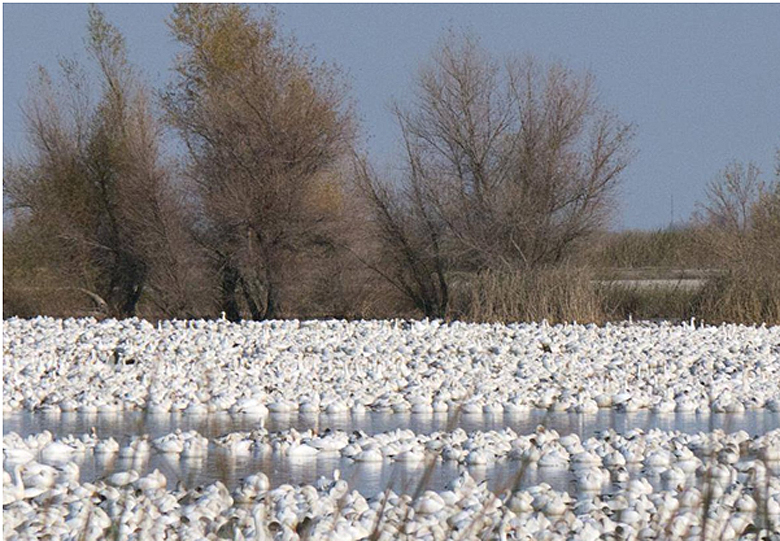
Större Snögås, Greater Snow Goose (Anser caerulescens atlantica)
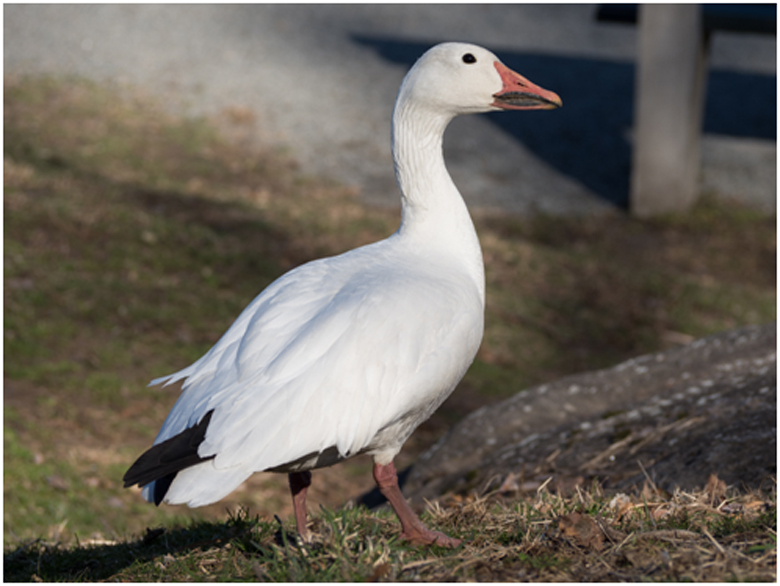
“The Greater Snow Goose population underwent a dramatic increase from a
few thousand individuals in the 1930s to one million birds in 1999. The
Greater Snow Goose has been designated as “overabundant” and has been
subject to special conservation measures to control the numbers. In
fact, harvest regulations were liberalized and a spring conservation
season was established in Quebec in 1998; it was subsequently extended
in 2012 to southeastern Ontario. Since the implementation of special
conservation measures, the population has remained relatively stable,
fluctuating annually between approximately 700 000 and 1 million birds.
The harvest of Greater Snow Geese has increased since the end of the
1980s and has more than doubled since the introduction of special
conservation measures in Canada and the U.S.”
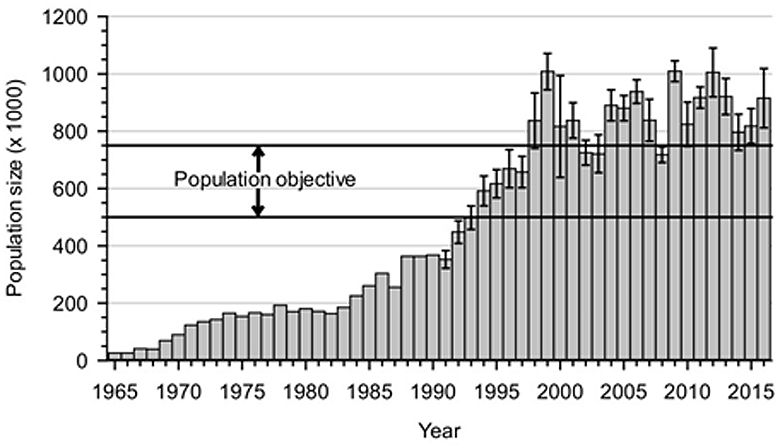
https://www.ncbi.nlm.nih.gov/pmc/articles/PMC5316327/

Det finns nu tre populationer av denna gås. Två
finns i Kanada på sammanlagt mellan 13 och 14 miljoner. På 1970-talet
uppskattas det att det fans drygt två miljoner av denna. Minst en
sexdubbling. Den tredje häckar på den ryska Wrangelön och är ca 100 000.
Jakt rekommenderas i Kanada för att kontrollera
populationerna.
“Lesser Snow Geese nest in colonies ranging from a few hundred to over a
million birds in coastal and inland areas of the Arctic. There are three
populations of Lesser Snow Geese that nest in or migrate through Canada:
the Mid-continent Population, the Western Arctic Population and the
Wrangel Island Population. The Mid-continent Population of Lesser Snow
Geese has increased dramatically from just below 2 million in the 1970s
to more than 12 million adults in the last decade. This population was
designated as overabundant in 1999 and has since then been subjected to
special measures to increase harvest in an attempt to control the
population size and growth. The Western Arctic Population has also
increased significantly, from approximately 300,000 in the 1970’s to
over 1,200,000 in 2016. In 2014, the Western Arctic Population was also
designated as overabundant and special conservation measures to control
the population were implemented in Alberta and the Northwest
Territories. In recent years, the harvest of Lesser Snow Geese has
slightly increased compared to harvest levels in the 1970s, although it
appears to have stabilized in the last decade despite the implementation
of special conservation measures.”
Mindre snögås är i genomsnitt knappt 1 kg
lättare.
Dvärgsnögås, Ross’s Goose (Anser rossii)
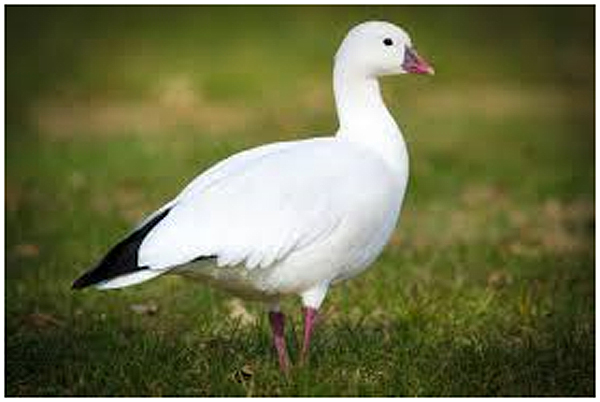
På 1930-talet fans det ca 3000 kvar av denna
art. Betraktades som sällsynt i början på 1900-talet. Den har ökat
betydligt sedan 1960-talet. Nu finns det ca 2 miljoner av denna art.
“Ross’s Geese mainly breed in the Queen Maud
Gulf Region in the central Canadian Arctic, but numbers are increasing
along the western coast of Hudson Bay, and on Southampton and Baffin
Island. Their wintering range has also expanded eastward from historical
wintering areas in California. Considered a rare species in the early
part of the last century, Ross’s Geese have shown increasing numbers
since the 1960s, and are among the fastest growing populations of
arctic-nesting geese in recent years.
Ross’s geese were declared
overabundant in the midcontinent region of the United States in 1999 and
in western Canada in 2014.
Lincoln estimates of population size
averaged almost 1.9 million adults from 2012-2016. The harvest of Ross’s
Geese in Canada and the U.S. increased slowly from the 1960s to the
1980s and then more rapidly through the 1990s”.
“Ross's geese – which migrate between Canada's northern coastline and as far south as California – were once hunted so extensively that their numbers were down to a few thousand in the 1930s. Environmental protections and the spread of agricultural practices that favour bird foraging have changed all that.Grazing geese strip the land bare, exposing soil and peat. Recovery is slow in the Arctic's cold climate and poor soil.Ripping out vegetation changes the flow of soil moisture. It draws salts to the surface and prevents normal plants from growing back. That, in turn, affects other birds and animals.”
Varför är det problematiskt med så många
snögäss?
Svaret finns i den engelska texten ovan. De äter
rent på tundramarken så att underliggande jord exponeras. Ej bra då
återväxten går extra sakta i artisk miljö. Salt ansamlas i markytan pga
annat flöde av vatten och fukt. När saltet samlas vid markytan får
vanliga växter svårare att växa och det får negativa följder för övriga
organismer.
Info hämtat från:
Dessa fåglar började bli sällsynta i början på
1900-talet så därför infördes skyddslagar 1917, både gällande jakt och
äggplockning. Sedan komdet torra trettiotalet som ytterligare minskade
på populationerna av fåglar som häckade i våtmarker och sjöar.
En organisation vid namn ”Ducks Unlimited”
startade 1937 för att köpa in marker och skydda/omvandla dem till
våtmarker. Denna organisation bildades av jägare.
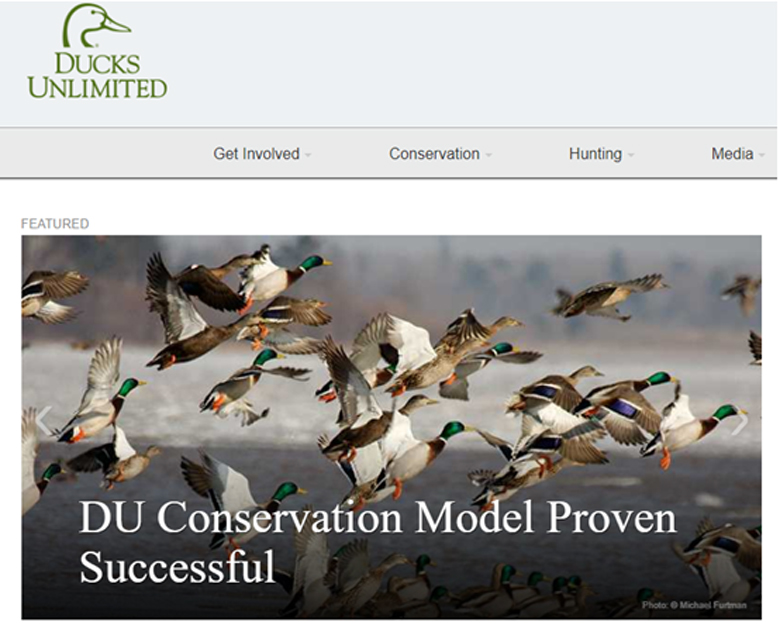
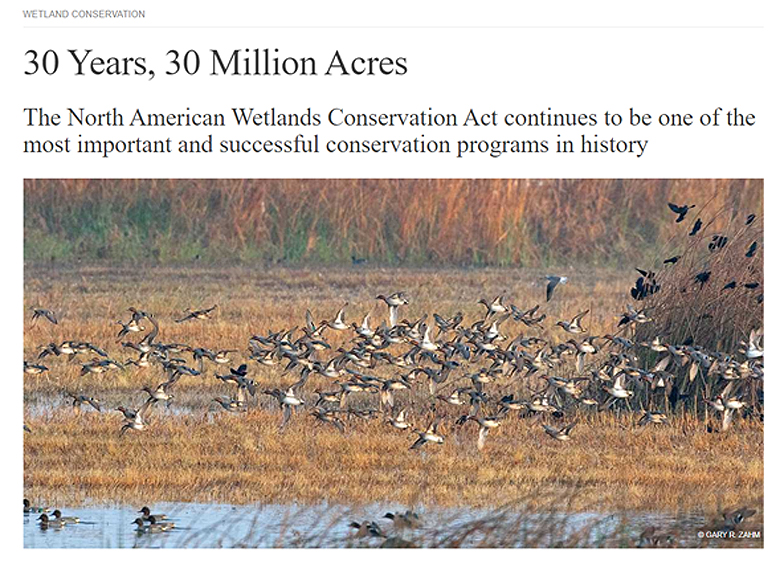
Ca 8 miljoner ha har skyddats för speciellt
andfåglar men det gynnar även andra vadare så klart.
Allt är inte bara
utrotning tack och lov!